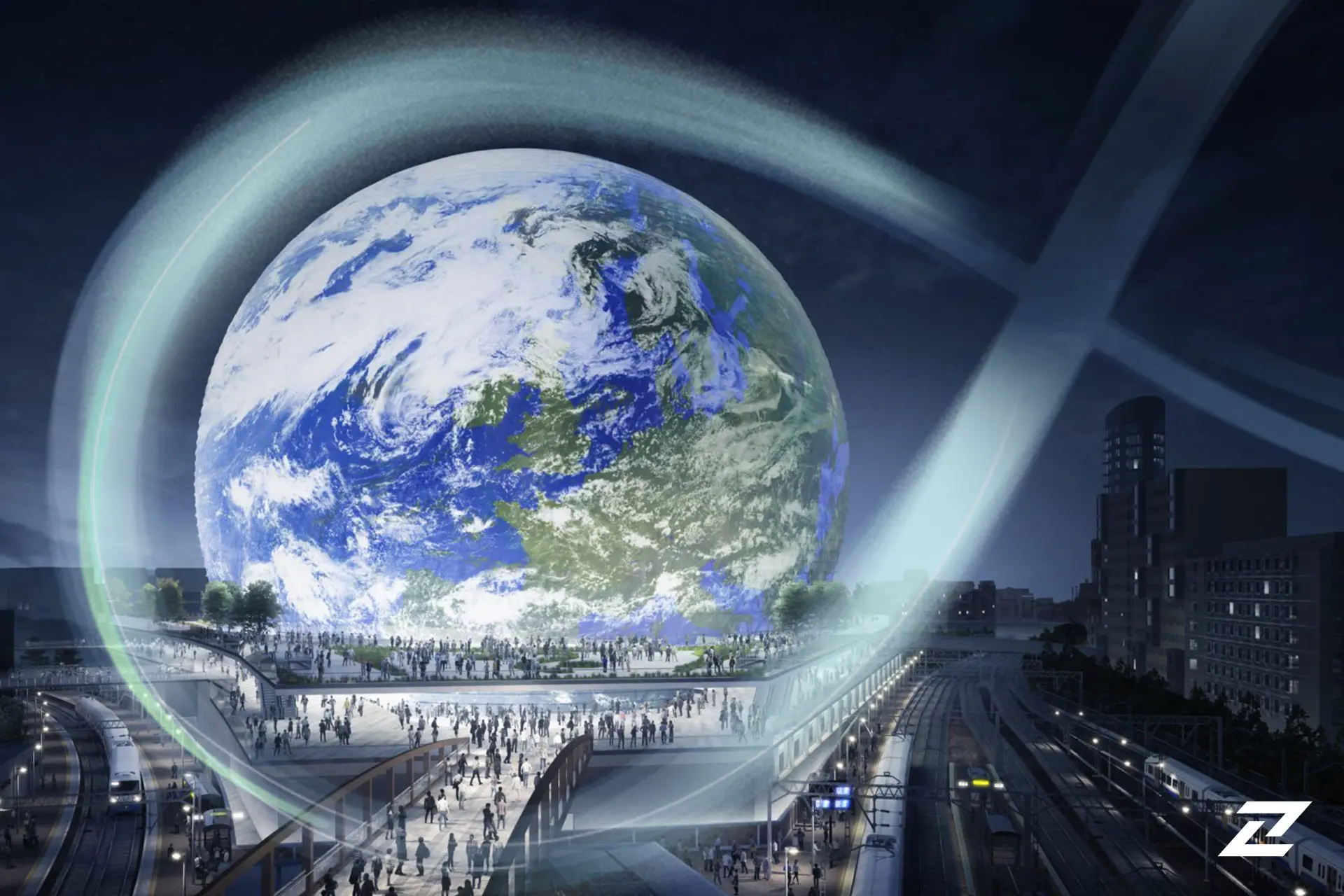Technology
The Icon of the Seas cruise ship, a city on water
Published
2 weeks agoon


Conjunction: Expressing a condition.
Conjunction: Connecting two to create a new well-formed formula that requires it to only be true when both of the two formulas are true.
Noun: In rhythm, the second half of a divided beat.
Noun: breath.
Noun: ; steam fog.
Verb: To breathe; whisper; devise; imagine.
The Icon of the Seas cruise ship, a city on water
On January 27, 2024, the first passengers of Icon of the Seas stepped on the deck of the world’s largest ship to experience an enchanting discovery in the west and east of the Caribbean Sea; A journey for eight days and seven nights.
The cruise tourism industry set a new record in 2023 with an increase of 2 million passengers over four years; But the biggest news on the high seas in 2024 was the maiden voyage of the world’s largest cruise ship, three times the length of a football field and five times the size of the Titanic.
Icon of the Seas ship with 20 decks and gross weight of 250,800 tons and a capacity of 9,950 people is the most amazing human-made phenomenon that goes to unknown waters like a luxurious metropolis. The 2,805 bedrooms in 28 groups, including family cabins with infinity-view balconies and bunk beds, offer a relaxing feel to adventurers looking for unique accommodations during their travels.
The Icon of the Seas is three times the length of a football field and five times the size of the Titanic
The symbol of the seas, the newest member of the Royal Caribbean cruise family, has dethroned its previous generation counterpart, the Wonder of the Seas, as the world’s largest ship, but beyond its gigantic and astonishing dimensions, this ship has also broken other records and claims various It is “the first” and “the most”.
The unveiling of Icon of the Seas sparked a wave of surprise, excitement, and curiosity among Internet users. The images that were published during the first voyage of the ship, followed endless discussions, comments, and questions of the interested people on social networks. Let’s take a look at some fascinating and stunning facts about this maritime marvel:
Icon of the Seas key features at a glance
- The largest ship in the world with a length of 365 meters, a width of 67 meters, and a weight of 250 thousand tons
- It has the largest and most optimal interior space with more than 20 decks
- It has advanced technical equipment and luxurious cabins for 7514 passengers and 2350 crew members
- The most compatible with the environment and the least carbon emissions with LNG engines
- Using artificial intelligence for optimal energy consumption on board
- The highest cost of building a cruise ship with about 2 billion euros
- It has more than 20 restaurants with international menus
- Extensive recreational facilities such as a floating bar, rock climbing walls, large slides, and infinity pools.
Also, in December 2023, Lionel Messi’s name was registered as the sponsor and “godfather” of Icon of the Seas.

The beginning of the story
In 1996, the architects of two companies, Royal Caribbean (Royal Caribbean) and Wilson Butler (Wilson Butler) defined a new mission for themselves: “Providing an environment for the best family vacations on the planet.” Over the past 28 years, these two companies have launched 24 giant cruise ships, each of which was recognized as the world’s leading floating artifact of its time.
In the mid-2010s, the cruise industry was growing rapidly and major cruise lines were looking to create different experiences and more innovations to attract passengers. In this regard, in 2016, Royal Caribbean proposed a new idea, the implementation of which challenges the innovation boundaries of the entire industry:
“Launching a project to build a new cruise ship that will be unique not only in terms of size but also in terms of technology, amenities, and environmental sustainability.”
Builders and designers
To implement its plan, Royal Caribbean Group prioritized several main goals:
First, the optimal use of ship space to build multiple sections with different uses that at the same time work in an integrated and coordinated manner. The second priority of the builders was to significantly reduce the harmful effects on the environment, and for this purpose, the use of green technologies, energy consumption optimization systems, and reduction of carbon emissions were considered in all stages of design.
In addition, in order to provide a unique experience, the new ship had to meet all the needs of passengers, including recreation, relaxation, and adventure; Therefore, the companies had to design each area as a multi-purpose, modern, and intelligent space.
Therefore, the Finnish company Meyer Turku, one of the largest and most reliable shipbuilders in the world, was chosen as the main contractor for the construction and design of the ship’s structure and hull. This company, which had previously collaborated with Royal Caribbean in the construction of two Oasis-class ships and had a lot of experience in the construction of cruise ships, was responsible for the design of the hull, mechanical systems, and structural integrity of the ship.
The Swedish company Tillberg Design of Sweden, as the second partner of the project, is committed to creating a unique and inspiring space by using the latest techniques and production materials. Tilburg Design had to focus on the priority that the interior of the ship should not only be luxurious and luxurious, but also efficient and innovative.
Finally, Royal Caribbean’s oldest partner, the American company Wilson Butler, which is famous for designing public and cultural spaces, entered the project as the third partner with the aim of creating a space that evokes the feeling of a city floating on water for passengers. In addition to these partners, during the construction of the ship according to the needs of each department, other teams from different countries of the world were invited to cooperate.
Scott Butler, director and founder of the Wilson Butler Company in 2023, said about the design of this ship:
The design of a ship is not much different from the design of a building on land. Our work is like designing a building that is in a constant state of vibration. In fact, the great design of a ship proceeds just like the planning of a city.
What makes Icon of the Seas look like a city on the water are the “neighborhoods” or planned areas named Aquadome, Thrill Island, Chill Island, Surfside, Hideway, and Central Park, which we will take a look at in the following sections.
Ship building
The construction of Icon of the Seas officially started in early 2019. The first stage, as is usual in the construction of any large ship, involved checking the details and carrying out preliminary tests.
At this stage, the designers carefully focused on the body shape, propulsion, and energy systems, as well as environmental sustainability. Advanced fluid dynamics (CFD) simulations were also performed to ensure high efficiency and reduced hull drag in water.
In October 2019, Mir Company inaugurated the project, according to the common tradition of shipbuilders, by cutting the steel sheets used in the ship’s hull.
Azipod propulsion systems and LNG fuel
The Icon ship’s six engines were provided by the Finnish company Wärtsilä with a dual propulsion system to use heavy oil and liquefied natural gas (LNG) as fuel.
The LNG propulsion system produces much less nitrogen oxide than traditional fuels, which is a big step towards cleaner seas. Accordingly, two 307-meter tanks with a capacity of 27 tons were transferred to the ship for LNG fuel.
The ship’s fuel system was equipped with “high pressure tanks” and “heat exchangers”, which allowed the storage and optimal use of LNG. Also, this system was connected to the combustion management unit, which continuously adjusts the fuel quality and combustion efficiency, and prevents the creation of harmful NOx gases by precisely controlling the fuel-air mixture.
LNG fuel tanks being transferred to the ship
Royal Caribbean
The Icon of the Seas propulsion system was designed based on azipods, which are among the most advanced electric propulsion technologies in the marine industry. Unlike conventional propulsion systems where a fixed propeller is driven by a shaft, the Azipod enables the propeller to rotate 360 degrees.
Azipods increase the maneuverability of the ship
This complete rotation capability increases the ship’s maneuverability reduces the need for lateral propulsion systems such as rudders, and particularly facilitates the stopping or moving of the ship in narrow harbors. Also, the design of azipods is such that it minimizes the turbulence created in the water, and by reducing water resistance, it reduces fuel consumption by 20% compared to conventional systems.
The deployment of three 20MW Azipod drives on the Icon ship increased the speed of this modern cruise to 22 knots (41 km/h).
Engineering-wise, azipods operate using induction motors and are powered by diesel generators or a combination of diesel and natural gas. These engines have high efficiency due to not having many moving parts and reducing friction, and on the other hand, using an efficient cooling system in Azipods increases their lifespan.
Two 307-meter LNG fuel tanks with a capacity of 27 tons provide the ship’s propulsion energy
Artificial intelligence not only recognizes the paths that require the least energy but also controls the energy consumption of numerous internal equipment such as air conditioning and elevator systems.
The lighting department of the ship was entrusted to Helamarine company, which creates a safe and pleasant atmosphere in the open seas with 20,000 low-consumption LEDs. At the same time, several complex and extensive optical systems provide accurate control of the light in the public areas of the ship digitally to the ship’s officials.
Intelligent ship control
Ship control includes an integrated management system (Integrated Bridge System) that is driven by advanced software and modern user interfaces. This system provides real-time monitoring and control of all operational parameters of the ship, including positioning, speed, route, and fuel consumption.
In addition, the IBS system is equipped with multiple sensors and warning systems that detect sudden changes in environmental or operational conditions and notify the crew.
The IBS system controls all operational parameters of the ship with multiple sensors
Using artificial intelligence and predictive algorithms, the intelligent control system can suggest the best sea routes and optimize fuel consumption. Also, the stabilization system (Stabilization System), which works in coordination with IBS, reduces the ship’s oscillating movements in turbulent sea conditions, which results in more passenger comfort and reduced depreciation of the ship’s structure.
Executive stages of ship construction
 Part of the Icon of the Seas construction process
Part of the Icon of the Seas construction process
The process of building the Icon of the Seas went through three complex but coordinated stages:
Design and simulation: The first stage included the initial design and computer simulation of the systems. Using specialized software and Computational Fluid Dynamics (CFD) simulators, accurate models of propulsion and fuel systems were prepared. These models were tested under different operational conditions to identify any possible defects or challenges before starting the actual development of different sectors and areas.
Construction and assembly of parts: In this stage, different parts of the ship were made in a modular way in special workshops. Then these parts were moved to the main ship building site and installed using super heavy cranes. To avoid any mistakes, the assembly process was done using automatic welding robots and laser measurement systems.
 Aquadome dome assembly stage
Aquadome dome assembly stage
Testing and commissioning: After the completion of the assembly, the ship was subjected to detailed tests. All sections were examined and adjusted separately and in combination with each other. At this stage, navigational tests including maneuverability tests, fuel efficiency, and response of control systems to variable conditions were conducted. These measures were accompanied by the simulation of different sea scenarios to prepare the ship to face any conditions.
Different parts of the ship are made modularly in special workshops and then transferred to the hull of the ship.
During the coronavirus pandemic, when the raw materials for construction were not available, the design personnel simulated, tested, and calibrated their designers in 3D by making replicas of different parts of the ship in appropriate sizes.
 Testing the Aquadome waterfall in the workshop
Testing the Aquadome waterfall in the workshop
Even the cabins were assembled in sections called “mega-blocks,” or modules, at the manufacturing plant, then at the docks, and then transferred to the ship. This reduced the build time and was like building a giant Lego.
Commitment to environmental technologies
As part of Royal Caribbean Group’s SEA the Future program, the company’s new ships are equipped with MAP and MAG systems that synthesize solid waste into gas and reuse it to generate energy.
These technologies not only minimize waste but also produce valuable by-products such as biochar, which can be used as a soil conditioner. According to the recycling programs of this ship, 90% of the waste is never buried in the soil. The energy obtained from the MAP system is also used in the ship itself.
MAP and MAG systems convert solid waste into gas
Another noteworthy point is that Royal Caribbean plans to reduce the food waste of this ship by 50% by 2025. In this futuristic plan, artificial intelligence is used for immediate food production according to existing needs and requests, and training of the ship’s crew with sustainable solutions is also on the agenda. The above program has led to the saving of 24% of food waste to date.
In another environmental innovation, the heat from the engine houses is used to desalinate seawater. 93% of the ship’s fresh water is produced and purified by the reverse osmosis system in the ship itself. Also, by producing small bubbles that cover the whole body of the ship, the compressors reduce the friction between the water and the body and subsequently reduce fuel consumption.
93% of the ship’s freshwater is purified and produced by a reverse osmosis system in the ship itself Mockler, Chief Decarbonisation Manager for the new build, describes Icon as a great example of how sustainability is being considered for the future:
What we did on board Icon was the beginning of a path, not an end goal. We want to use these ships as platforms to advance the development of technologies that we will need in future products; Because our effort is to draw the next modern ships in the most stable state possible.
Different departments and quarters of the ship
Icon of the Seas is described as a city on water because it consists of different neighborhoods; Including Hideway, Gobd Cascade, and Central Park, and we will have a close look at these amazing neighborhoods.
The Pearl: The pearl of the ship’s entrance

The Pearl section was designed and introduced by one of Brooklyn’s media artists. This spherical piece with a diameter of 15.3 meters is covered with more than 3,600,000 moving computer tiles and is now known as the largest kinetic art sculpture in the world, which displays an unprecedented fusion of art and technology.
This awe-inspiring work stands out not only for its grandeur, but also for its depiction of the essence of the ocean, as it beautifully simulates various natural phenomena such as rolling waves, gentle breezes, meteors, and a dynamic ocean surface. Inspired by the sea, the tiles are arranged in a Fibonacci sequence and reflect the patterns found in marine life.
The movements of “Marwaid” are influenced by the tide and wind data of the Caribbean Sea. This data, obtained from the web or the ship’s sensors, allows the massive pearl to constantly change and reflect the current environmental conditions in an ever-evolving display.
More than 3,600,000 computer-animated tiles inspired by marine life patterns are arranged in a Fibonacci sequence.
The Pearl area, like the entire ship, is an architectural masterpiece and a prime example of the innovative use of modern technology in the cruise industry. This spherical pearl is spread over four decks of the ship and welcomes passengers as a gateway as soon as they board. In the center of the pearl, a beautiful marble staircase connects the floors.
The Pearl derives its spherical form from a steel ball that acts as a supporting structure. Prominent engineers have also planned and deployed the infrastructure technologies of this sector: a combination of more than 5 thousand controllable LED lights and interactive media technology creates stunning visual effects and adapts to the environment at every moment.
The moving tiles, produced with Linear technology, create computer-controlled lighting effects. Also, the integrated sound system of more than a thousand watts enriches the listening experience of passengers and elevates their mood to higher levels. The total structural load of this section is estimated to be around 20 tons.
The iconic pearl is not just an eye-catcher but serves as a central point of reference for passengers exploring the heart of the ship.
AquaDome waterfall dome; Manifestation of art and technology

Located at the front of the ship, the Aquadome has a huge space with a magnificent glass dome that offers viewers a wide and captivating view of the ocean. This area has the “highest waterfall” in the middle of the sea along with other exciting attractions. The construction of this dome set the record for the largest glass and steel structure installed on a ship.
AquaDome; The highest waterfall in the middle of the sea with a height of 16.7 meters
Of course, the waterfall itself with a height of 16.7 meters attracts attention as one of the engineering miracles of shape change. The Aquadome transforms throughout the day, offering passengers a variety of delightful experiences, from breathtaking sunrises to vibrant daytime activities. During the day, travelers can tour the AquaDome Market, eat at its restaurant, or sit and watch the 220-degree view of the surrounding ocean.
As evening approaches and sunset approaches, the waterfall becomes a dynamic backdrop for a diverse range of entertaining shows that take place nightly. In this way, the Aquadome creates a dramatic scene beyond a tall waterfall, with energetic movements and captivating lighting, which enhances the quality of every show beyond imagination. The show center of this neighborhood is called AquaTheater.




Michael Bailey, CEO of Royal Caribbean International, says about the construction of this section:
We went through an amazing journey with the engineers, architects and designers to build the AquaDome, and what amazes travelers is a testament to the innovation and creativity of the teams.
Aquadom neighborhood with an area of more than 33 thousand square meters extends from deck 14 to deck 22. The beautiful dome was built outside the ship so that other teams could complete the forward deck at the same time. The sea dome weighing 367 tons consists of 12 different modules with 673 glass panels and 712 aluminum panels and it took 8 months to assemble them.
The first marine dome with 673 glass panels and 712 aluminum panels
The process of lifting and connecting the dome to the spreader was done with 54 cables, and when the crane wanted to place it in a special position on the ship, another 12 cables were added. Just maneuvering it into place using a specialized rig took 80 hours. During this time, a separate team monitored the weather conditions to find the safest time to depart.
Central Park: Green Paradise in the heart of the sea

Central Parks are usually one of the most popular parts of Royal Caribbean cruises: a green and playful atmosphere that evokes the experience of being immersed in a park, and even the sound of birdsong. The presence of bars, cafes, restaurants, and shops in these areas makes them a pleasant environment to work.
But the Icon ship has also improved the class of Central Park in a surprising way: the central park with an area of several thousand square meters contains more than 33 thousand natural plants of different species that grow well with intelligent irrigation and lighting systems.
The largest cruise ship park with more than 33 thousand natural plants
To manage water in this section, a multi-layer drainage system was created under the ground surface. This system collects excess water and returns it to the smart irrigation system. In addition, the plants that were planted in this neighborhood were selected based on their resistance to sea conditions, including strong winds and direct sunlight, and each plant was carefully placed in a suitable place according to the light and irrigation needs.
This neighborhood also uses the fresh sea air to create a cool and comfortable environment by using advanced ventilation techniques. Smart lighting systems have been developed in a way that preserves the sense of naturalness of the environment even at night.
Royal Promenade: The beating heart of the ship

Royal Promenade is a busy and exciting street located in the center of the ship and is considered a place for gathering, shopping, and entertainment for passengers. This neighborhood, with a large area spread over two floors, is considered one of the most important and busiest parts of the ship.
From clothing boutiques to electronics stores, travelers can find almost anything they want in the department stores on this street. In addition to restaurants that offer a variety of international cuisines, the daily performance of live shows, music, and dance also doubles the vitality of the Royal Promenade.




The roof of this neighborhood is designed as a large digital screen that displays the sky views and attractive images, and the glass elevators also provide the opportunity to see all the surrounding scenery while moving passengers.
Surfside: a space for families

The space that was known as the Boardwalk in the Oasis class ships is designed in a unique and more advanced way in the Icon ship.
The most diverse entertainment facilities with smart security systems
For example, a large water playground is installed for children, and facilities such as splash pads, smaller water slides, Ferris wheel, face painting, arcades, sports areas, video game halls, and even a DJ play a significant role in entertaining families.
Separate restaurants and bars also make it possible for parents to grab something to eat or drink while the children are playing nearby while keeping an eye on their children. Easy access to Playmakers and an ice rink makes this neighborhood ideal for families.




From another angle, smart security systems guarantee the safety of all children in all parts of this neighborhood. Interactive applications also enable parents to manage their children’s entertainment programs online.
Chill Island: an ocean of tranquility

Chill Island is a neighborhood where travelers can get away from the daily hustle and relax in a calm and pleasant atmosphere. This neighborhood with artificial beaches and beautiful swimming pools provides the best atmosphere for travelers to relax and unwind.
It has the largest pool in the middle of the sea
In this three-story neighborhood, which occupies a good part of the middle of the ship, there are beaches with soft sand and comfortable chairs for relaxing, swimming pools with a curved design and jacuzzis with a view of the sea, and beach bars with a variety of cool drinks for passengers.
Some of the pools in this area are:
- Royal Bay: The largest pool in the middle of the sea, designed for all ages and located on the 15th deck.
- Cove Pool: A pool that is designed to face the ocean, and for this reason, it is also called an infinity pool.
- Cloud 17: Another pool overlooking the ocean with swirling water and a personalized and customized beverage bar that stands out on Deck 17.
- Swim & Tonic: The first water bar brand, a shallow pool with in-water seats that allow passengers to sit or stand comfortably and order their favorite drink. This pool is located on the 16th deck.



The water in the pools is purified and heated using modern technologies. Also, the surround sound systems reproduce the sound of waves and nature realistically so that passengers have the feeling of being on a real island.
The Hideaway: a modern and dynamic space for young people
Hideaway was originally designed with the aim of creating an attractive and modern space for young people and couples, and with a combination of fun and trendy facilities, it provides a great opportunity for travelers to spend their free time in a friendly and pleasant environment.
The floating pool can be considered one of the most prominent features of The Hideaway, which is located on the edge of the ship and offers a wonderful view of the sea. Several social spaces with live music and professional DJs provide revelers with lively nights, not unlike Texas clubs.
Smart lighting systems create subtle changes in the spectrum of colors and light intensity according to the event and time, and the advanced surround sound systems also bring a unique music experience to passengers.




In addition, if young people need to relax after several hours of fun, they can separate themselves from the surrounding noise in the exclusive lounges that have a very stylish and modern design, with comfortable chairs and light.
The interesting point is that Hideaway has spaces with multiple uses that can be changed quickly. For example, a lounge can be transformed from a daytime lounge to a nightclub.
Thrill Island Amusement Park: Innovation in Exciting Structures

A neighborhood located on the back deck of the ship, with a series of challenging games and activities for lovers of excitement and adventure. For example:
- The six water slides, which are the tallest marine specimens in the world, leave a unique memory and experience of free fall and speed in the minds of travelers.
- Adventure park with rope climbing routes, suspension bridges, and towers to climb
- Surfing simulator miniature golf and all kinds of energizing entertainment, each of which has its own fans.
It has the tallest water slides in the world and a surfing simulator
The construction of Thrill Island required advanced design and engineering to provide the desired facilities in a safe and efficient manner. For this purpose, in the structure of the water slides and adventure park, light, resistant, and stainless alloys were used, which can withstand high pressure and weight and have a long life.
One of the other requirements for the success of this neighborhood was intelligent safety monitoring and control systems that continuously monitor the condition of structures, equipment, and even weather conditions and take preventive measures if needed. For example, in case of sudden changes in wind speed, the FlowRider surf simulator automatically changes its settings to keep passengers safe.




On the other hand, due to the high volume of Thrill Island activities, special energy management systems were designed for this neighborhood. These systems help reduce overall energy consumption on board while maintaining an exciting experience for passengers.
District 6 in this neighborhood has a free fall slide called Pressure Drop, which falls from a height of 33 meters at an angle of 66 degrees.
 Crown’s Edge in Thrill Island
Crown’s Edge in Thrill Island
The most daring passengers can also go to the ship’s edge and make their way along the skyway that extends beyond the ship’s perimeter towards the open sea: Crown’s Edge, a suspended walkway 47 meters above the ocean, is a first-of-its-kind attraction. It is installed in the icon ship and has no similar example in the marine technologies of the world.
Absolute Zero: The Show on the Ice Arena

This area is considered to be the largest ice skating rink on ships in history, completely redesigned for bigger feats to amaze all passengers.
Passengers can sit on the seats around the square to watch star actors and artists perform high takeoffs and spectacular turns on skates. During the day, fans can enter the ice rink themselves and perform.
Suite Neighborhood: luxury accommodation
With special facilities and private space, the Suite Quarter offers the highest level of comfort and VIP services to passengers who have booked the ship’s luxury suites. Private lounge, modern design and stunning views, exclusive restaurants and bars, swimming pool and Jacuzzi, and private sun deck are just some of the facilities reserved for VIP passengers.
Each suite uses soundproof walls and is equipped with smart systems that allow travelers to manage the temperature, lighting, music, and even their orders in a personalized way.
In addition, passengers in this neighborhood have priority and faster access to all parts of the ship. The spacious deck area with plenty of seating in this two-story neighborhood provides a quiet and well-equipped area for families to relax.
Cabins
Although Icon of the Seas has fewer cabins (2,805 cabins compared to 2,874 rooms) than the largest ship of the previous generation, Wonder of the Seas, it hosts more passengers.
The reason for this difference is nothing but the focus of Icon designers on larger cabins that accommodate more than two people. In fact, more than 82 percent of the ship’s staterooms are designed for three or more guests, making them an ideal choice for family vacations.


The largest cabin on the ship is a three-story suite with an area of 540 square meters, two bedrooms, and a maximum of 8 passengers, with a cinema room, two balconies, and a private backyard.
But beyond the room size, the family-oriented design can be seen in every detail: from room layout to amenities and in-suite activities.
 Icon of the Seas family cabin
Icon of the Seas family cabin
For example, the tube-like slide that connects the upper floor to the ground floor living area, along with the popcorn machine, ping pong table, whirlpool, video games, and other entertainment can keep children entertained for hours.
These luxury suites have both a high cost ($8,000 per week) and an ever-increasing demand so that the entire complex is fully booked until the end of 2024.
Read more: Kansai International Airport, Japan
All of these innovations have been developed based on “customer intelligence,” says Michael Bailey, president of Royal Caribbean International, about the ship’s smart technologies. He said during the round table of senior managers at a media event in Turku:
Understanding customers and understanding how they want to interact with each other is fundamental to creating innovation and new products like Icon of the Seas.
This is not done like throwing darts at a sable board. We use a huge amount of data, not just the data of the guests who travel with us, but much more. We actually have a lot of questions from this data, trying to understand if our guests are enjoying the product or the experiences we’re offering, or what they like and don’t like.
The highest ship booking rate
Since its introduction in October 2023, Icon of the Seas has captured the attention of the world with numerous record-breaking events, but apart from the features and facilities, this ship has also broken the ticket booking record. Prior to this ship’s maiden voyage, Royal Caribbean set the record for the most booked ship in one day and the most weekly booked in history.
All tickets for the first voyage of the Icon ship, which took place in January 2024, were sold out within 24 hours. On this cruise, which started from the port of Miami, the ship made stops in the following ports according to the schedule of the Eastern Caribbean: Buster in the country of St. Kitts, St. Thomas in the US Virgin Islands, and then Kokoki in the Bahamas.
The ship will continue to sail year-round on routes covering the eastern and western Caribbean, Mexico, and the Bahamas.
With Icon of the Seas, Royal Caribbean symbolized the endless horizons of the modern shipbuilding industry and set new benchmarks and standards for future cruise ships.
According to this company, the second Icon class ship will be unveiled in the summer of 2025 under the name Star of the Seas. Now it seems that in the endless world of innovation, the boundaries of possible and impossible are shifting every day.


You may like
-




What is Kali Linux? Everything you need to know about this popular but mysterious distribution
-

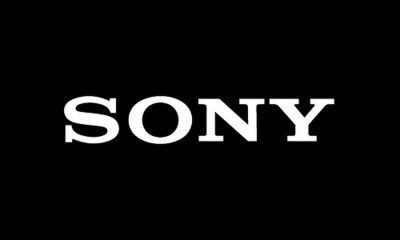


Sony Brand Story; From the production of rice cookers to becoming one of the most famous companies in the world
-




How did the people of the past imagine the future?
-

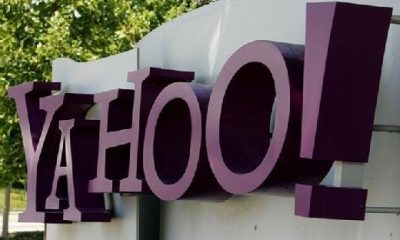


The story of the Yahoo brand, the story of the fall of a unicorn startup
-

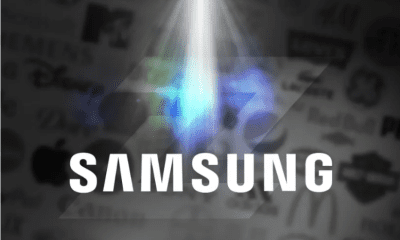


Samsung brand story; Full-view mirror of Korea’s commercial history
-




How to recognize the name of the font from its picture?
Technology
What is Kali Linux? Everything you need to know about this popular but mysterious distribution
Published
1 day agoon
15/09/2024

What is Kali Linux? Everything you need to know about this popular but mysterious distribution
In today’s technology era, as devices and tools become more advanced, their negative and destructive side also become more complex, and as a result, interaction with them requires more care. Currently, with the pervasiveness of the Internet the strong dependence of our daily lives on it, and the emergence of artificial intelligence, cyber threats have also increasingly spread, and the news of hacking various platforms is heard from left and right.
Considering the cyberization of part of people’s lives (entertainment, chat, and earning), the importance of strong cyber security measures cannot be ignored. Kali Linux or in English Kali Linux is a powerful and open-source Linux distribution that is specifically used for penetration testing and digital research and is considered one of the most important tools in the field of cyber security.
 Kali Linux 2024.3
Kali Linux 2024.3
Every techie has probably thought of installing Kali Linux, even via a virtual machine, to poke around and entertain their inner little scientist.
When users first encounter Kali tools, they see strange names such as BeFF Bettercap Hashcat Metasploit, or Nmap, which are almost difficult to guess their use from the name. Overall, Kali is a powerful distribution, and working with it requires a deep understanding of its tools.
What is Kali Linux?
Kali Linux, formerly known as BackTrack Linux, is a Debian-based Linux distribution developed by Offsec. This Linux distribution hosts hundreds of different tools used for penetration testing, reverse engineering, and vulnerability detection of networks and websites.

Due to the fact that Kali is developed based on Debian, it has high stability and security, and its Debian base allows it to benefit from vast software repositories and a similar package management system. In addition, if you are in the category of users who are already familiar with Debian Linux distributions such as Ubuntu, navigating Kali will not be difficult for you; But for users of other operating systems to enter the world of Linux, learning Kali takes more time.
Another important goal of Kali developers is to give the user unlimited freedom to have an open-source and ever-evolving platform and not just be limited to the tools available on the platform. Thus, even the most detailed parts of the software on Kali are open to optimization by the user.
Who uses Kali?
If you are imagining a sequence of Mr. You’re Robot, which depicts a hall full of professional hackers, and the hackers are sitting behind their systems in hoodies, you’re completely wrong. The use of Kali Linux does not require special clothing and there are professional and skilled experts who appear in their company and workplace every day and are responsible for simulating attacks on the network and discovering and fixing its vulnerabilities.
Other people for whom the use of Kali Linux is useful are instructors who plan to train the next generation of white hat hackers and ethical hackers, and Kali Linux is considered the best toolbox for training.
Key features of Kali Linux
Kali Linux has a variety of tools in various categories, including intelligence gathering tools, vulnerability analysis tools, wireless attacks, password mining, and social engineering tools. Do not forget that one of the main foundations of hacking and penetration is social engineering.
 Kali Linux tools menu
Kali Linux tools menu
In Kali Linux, you can use Nmap to scan a network and identify its open ports, Metasploit tool is also provided to exploit a vulnerability, and Wireshark should be used to go deep into the traffic of a network.
Tools like Wifite and Airgeddon are also pre-installed on the Kali platform to check the security of your Wi-Fi network. In fact, Wifite automates the process of cracking WiFi passwords, while Airgeddon provides a convenient environment for assessing wireless network security.
Regardless of the tools and programs that are available by default on the platform immediately after installation, users can install other programs they need by connecting to the Internet by learning how to install the program on Linux.
 Metasploit tool on Kali Linux
Metasploit tool on Kali Linux
The Kali developers have paid attention to every detail and even included a custom kernel kernel for packet injection, which plays a key role when working with Wi-Fi. In addition, all packages are signed with GNU Privacy Guard to assure the user about the security of the platform.
Features of Kali based on the introduction on the official website:
- It is free and will always be free.
- Git is open source.
- It conforms to the Filesystem Hierarchy Standard.
- It is compatible with a wide range of devices.
- It is developed in a safe environment.
- Supports multiple languages; Of course, the platform tools are in English.
- Compatible with ARMEL and ARMHF.
Why is Kali Linux not suitable for everyone?
Kali tools are very powerful and require the same amount of knowledge and experience to use them properly. For example, a normal user might want to scan his home Wi-Fi network and find possible vulnerabilities by installing Kali. But in this process, with Kali’s tools, he creates a problem that has serious consequences for him.
 Installing the program in Kali Linux through the terminal
Installing the program in Kali Linux through the terminal
Suppose you try to execute a script without sufficient knowledge and because Kali is connected to the Internet, this script affects the computer of a certain person or organization. Do not forget that Kali is not designed and optimized for the everyday use of ordinary people and common tasks such as web browsing, editing documents and watching movies.
Go to Ubuntu to satisfy your curiosity and experience the Linux environment
If you are just curious about working with Linux and getting to know the environment of Linux distributions, better options can be found compared to Kali. Usually, the most recommended migration from other platforms to Linux ends up with the Ubuntu distribution, which has a user-friendly interface and a huge support community and runs everyday processes like any other operating system.
Linux Mint is another option recommended for beginners, especially for users who are used to traditional desktops. On the other hand, Windows users usually associate more with Zorin OS. These distributions are all developed for everyday use and perform tasks such as web browsing, editing documents and even running games very well.
Getting started with Kali
Finally, if you decide to install Kali Linux, you should download it from the official Kali website. On the Kali website, you can see different versions of Kali for installation in different ways, and according to your conditions and desired installation method, you can download the desired version.
To install Linux distributions, it should be noted that it is possible to install Linux on Flash or that the user can install the desired distribution on the virtual machine. Installing Kali on a virtual machine has the advantage that all events are kept in isolation and no damage is done to the user’s main operating system.
The Kali Linux distribution is considered the most popular platform for hackers and is designed for specific purposes where everyday use is not among its goals; Therefore, it is not necessary to install it for specialized work and of course to meet the needs of curiosity, but for normal use it is recommended to go for other distributions of Linux.
Dear Zomit users, what is your opinion about the user experience with Kali Linux? Do you recommend installing it?
fashion
Sony Brand Story; From the production of rice cookers to becoming one of the most famous companies in the world
Published
1 day agoon
15/09/2024

Noun: Someone who assists () a goal.
Sony brand story; From the production of rice cookers to becoming one of the most famous companies in the world
Sony is a Japanese multinational company headquartered in Minato, Tokyo. This company provides electrical services, gaming, entertainment, and financial services.
Sony is known as one of the pioneers in the production of electrical products and in recent years it has improved its position among the top companies in the world. Sony consists of many subsidiaries, the most famous of which are Sony Pictures, Sony Music, Sony Mobile, Sony Entertainment, and Financial Holding.
The story of the formation of the Sony brand
Masaru Ibuka returned to Tokyo from World War II in September 1945 to start a new job in the Japanese capital. He set up his workshop in an old, war-torn building with only eight employees. Their initial office walls were full of cracks and had no windows, but over time as their business progressed, the office building also improved.
In October of that year, Ibuka and his group launched a new company called Tokyo Tsushin Kogi, or Tokyo Institute of Communications Research. At that time, everyone was eager to work in the new company and wanted to use their engineering knowledge to rebuild Japan. However, no one knew where to start. Most of the employees were paid from Ibuka’s small savings and they had to work hard to survive.
The story of the formation of Sony goes back to 1945; When Masaru Ibuka returned from World War II
At that time and during the Second World War, people were thirsty to hear the news of the day. As a result, they came up with an interesting idea that changed the fate of the company forever. Most of the radios at that time were either destroyed by the war or could not receive radio waves due to police interference.
The Ibuka company repaired broken radios and also made it possible to receive waves using a series of converters. It didn’t take long for this model of radio to gain many fans among people.
Their business was in the center of attention and for this reason one of the Japanese newspapers published an article about them. This article not only got them more customers but also brought Ibuka’s old friend, Akio Morita, closer to him.
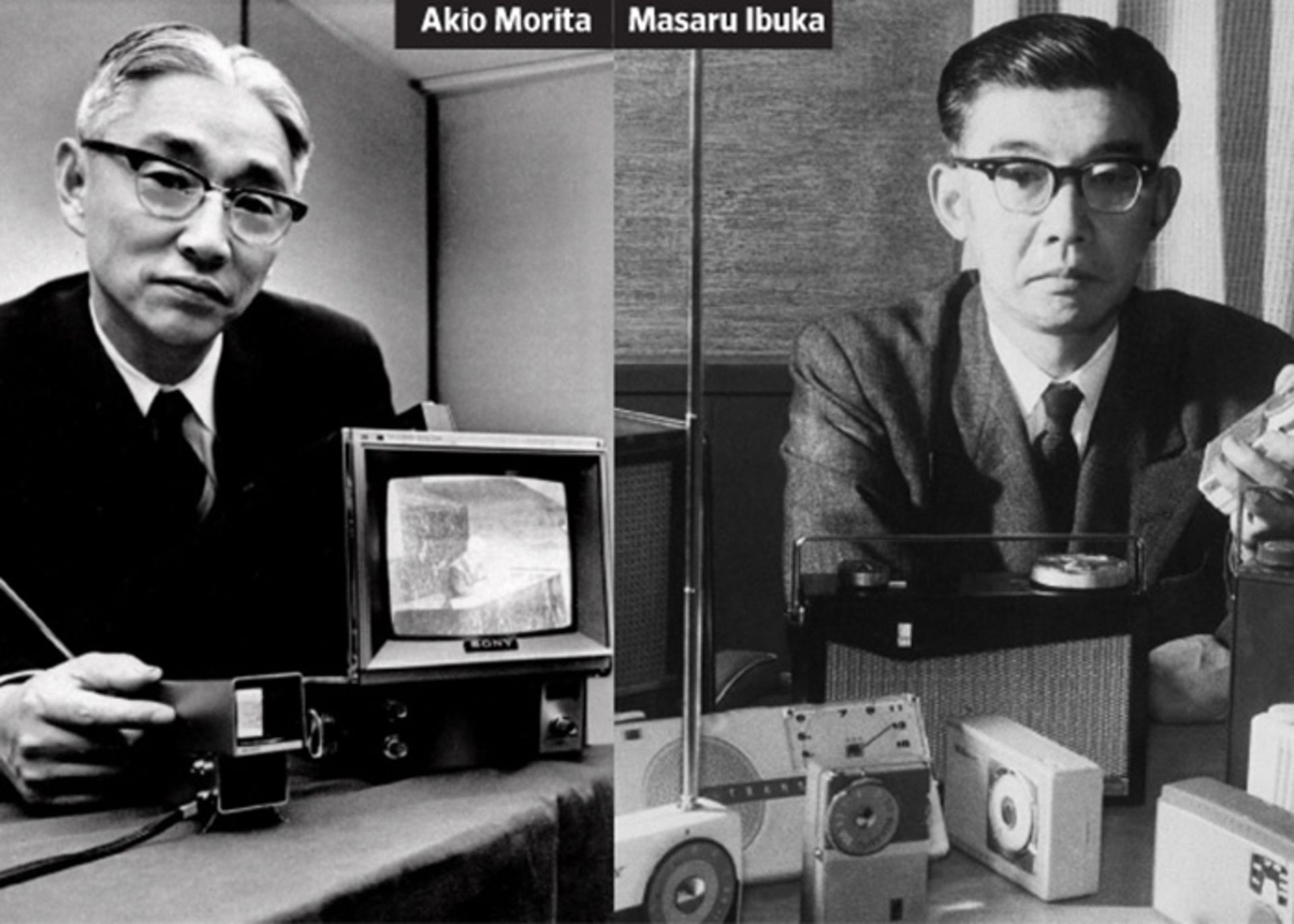
Ibuka and Morita, the founders of Sony Corporation, first met on a research committee studying new types of war weapons.
After some time passed, despite the big age difference, a deep friendship between Ibuka and Morita was formed. After the end of the war, Morita returned to his hometown and the communication between them was cut off. Until one day he read his friend’s name in a newspaper article and called Ibuka. Ibuka also asked him to get to Tokyo as soon as possible to start working with him again.
Sony’s brand name was originally supposed to be TTK or Totsuko
They were looking for a new name to advertise their company globally. Their intention was to choose the abbreviation of the company’s name, TTK, for advertising, but this name was already used. The word Totsuko was also another suggested name. But during his trip to America, Morita realized that it is difficult for Americans to pronounce this name.
They finally chose the name Sony from the combination of 2 words Sonus meaning sound and Sonny meaning young boy. Their purpose in choosing this name was to pronounce it in the same way in all languages of the world.
The company’s first product was a rice cooker, which, contrary to expectations, failed to meet expectations and failed. They did not get discouraged after their first failure and devoted more money to research. They focused on developing products that would benefit the Japanese people.
Sony; The first brand
During 77 years of operation, Sony has been able to launch the first product in many markets of the world. From Japan’s first tape recorder to Japan’s first transistor radio and other products.
Tape recorder

In 1950, the first Japanese tape recorder was made from its American model. This device was also not well received until Sony released a translated version of 999 Ways to Use the tape recorder.
After people became familiar with the product’s uses, the purchase request increased and the Sony tape recorder sold well. The demand for this product increased so much that the company had to expand its facilities to produce orders.
Transistor radio
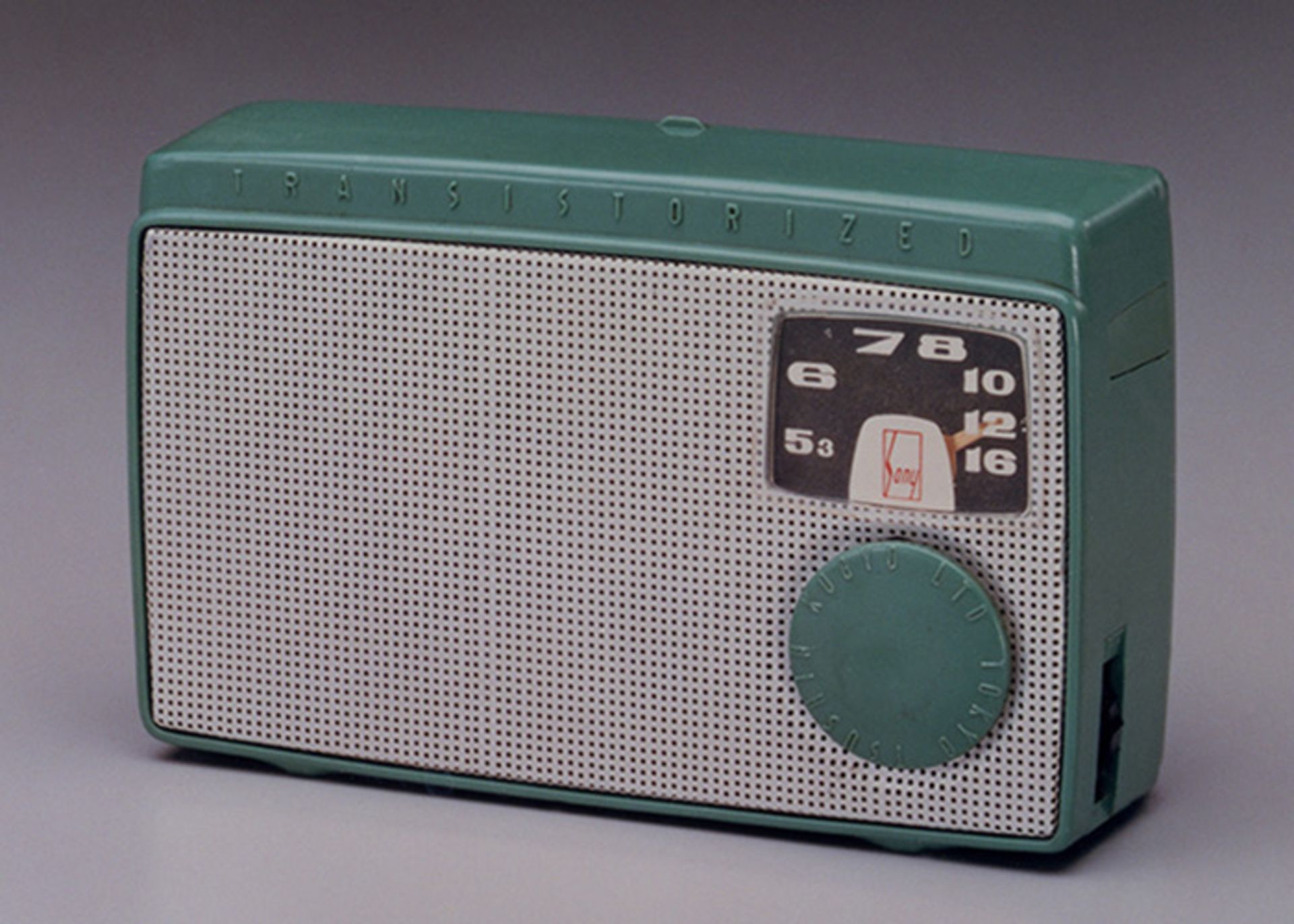
Japan’s first transistor radio was introduced in 1955 by Sony.
Portable TV
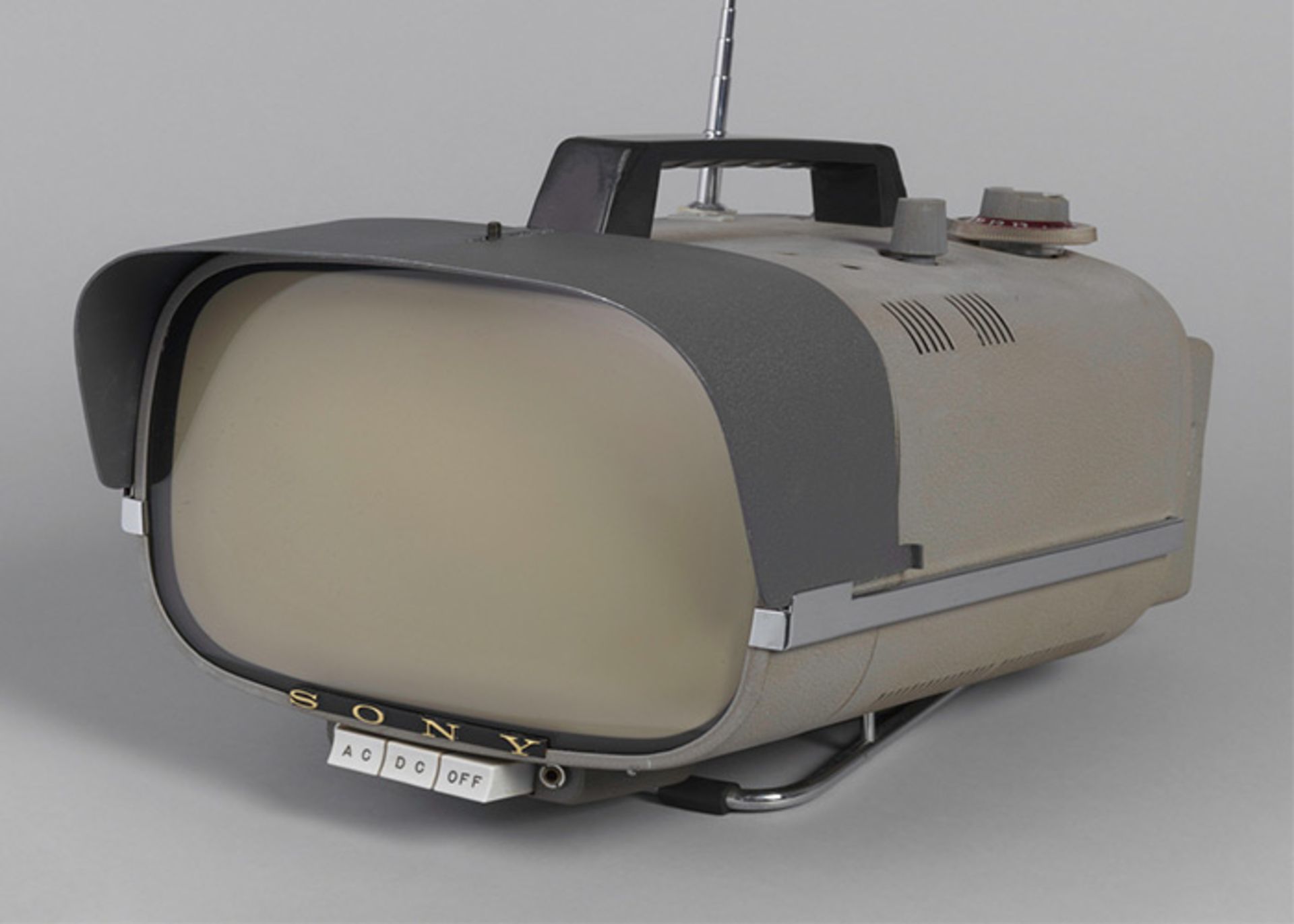
In 1960, Sony released the world’s first portable transistor TV. Sony used radio technology to produce this device.
The televisions of that time were big and in every house, a specific room was reserved for them. But these products brought a new definition of personal televisions to the market.
Video tape player
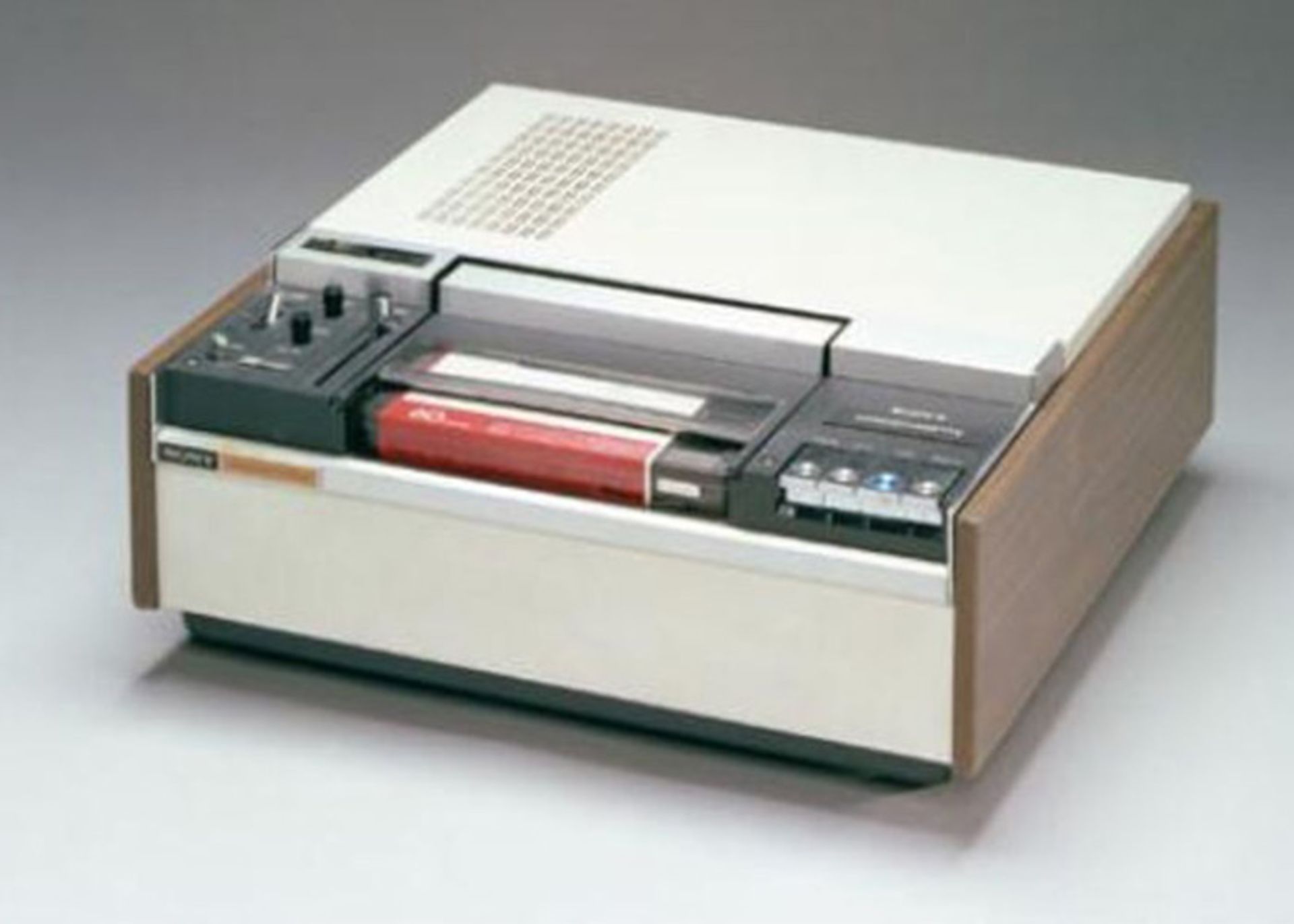
In 1971, Sony unveiled another product. This player was able to show videotapes in color inside the TV.
Masaru Ibuka retired in 1976 and was succeeded by Akio Morita as CEO.
The first generation Walkman

In 1979, Sony launched the first generation of Walkmans. These devices were portable and customers could listen to their favorite cassettes anywhere.
Many employees of the company believed that this device could not become popular among people without the ability to record sound. But contrary to their belief, this device introduced a new and successful lifestyle among people and achieved remarkable success.
The first CD player
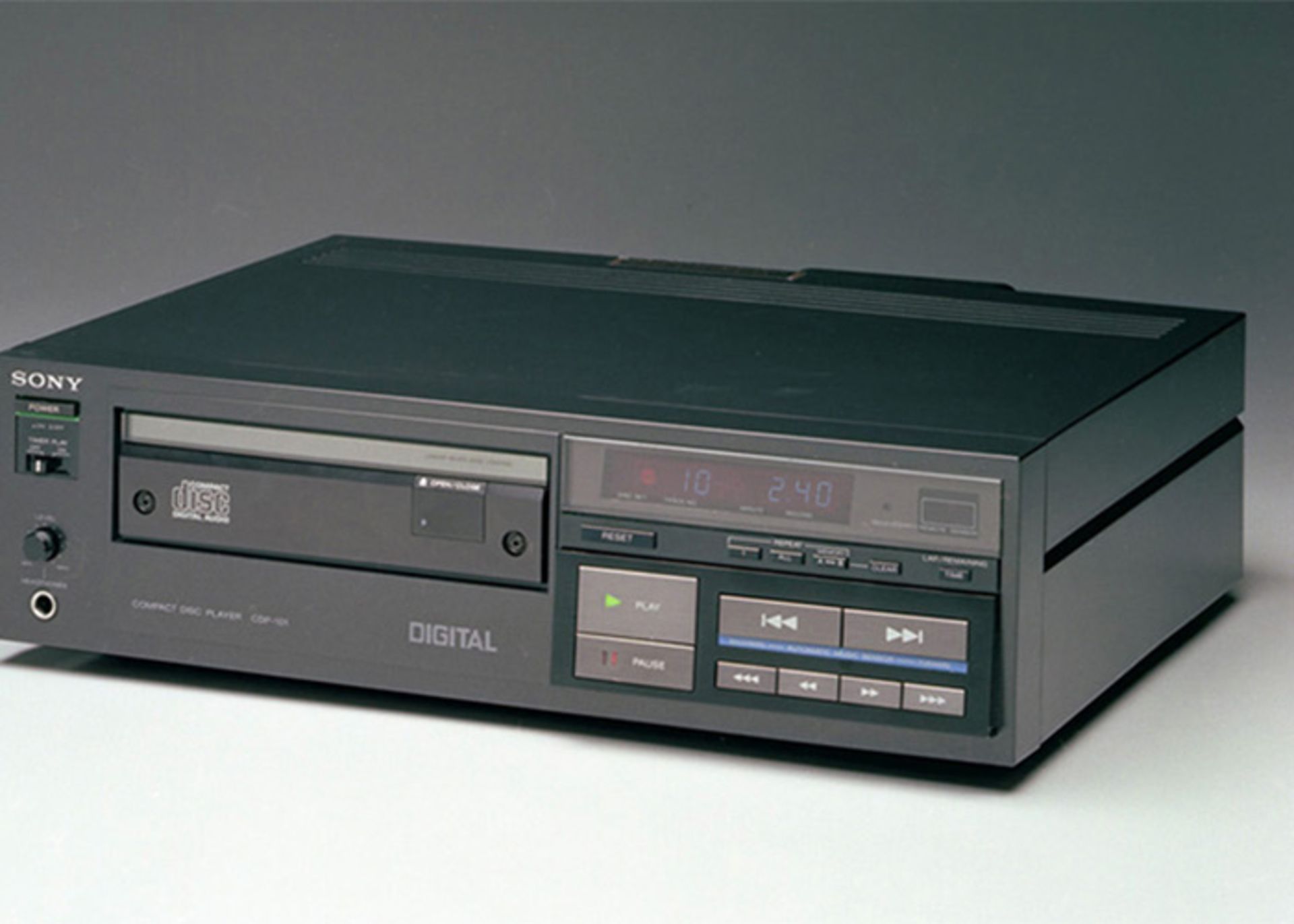
The world’s first CD player was launched in 1982 by Sony.
One of Sony’s senior managers, Norio Oga, was elected as the company’s CEO in 1989. Sony bought Columbia Pictures in the same year. This action was considered the biggest purchase of a Japanese company at that time.
PlayStation
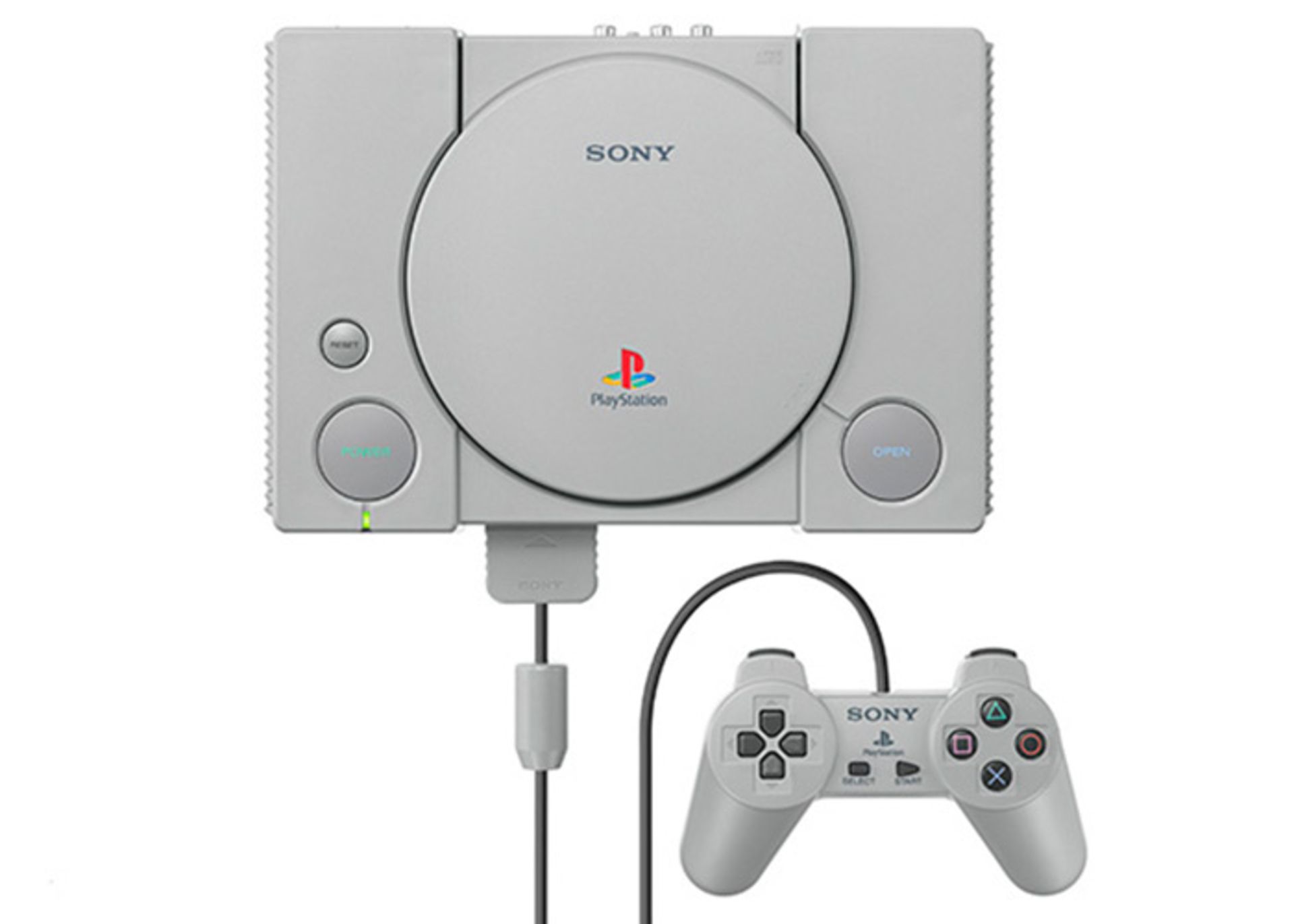
PlayStation is another important product of Sony. This product was sold in the Japanese market in 1994 and entered America and Europe in 1995.
PlayStation became so popular among people that its sales reached 10 million units by the end of 1996, and in 1998, about 50 million of this console had been sold. The production of new models of this product continues and today PlayStation 5 is considered the newest Sony console.
Digital camera
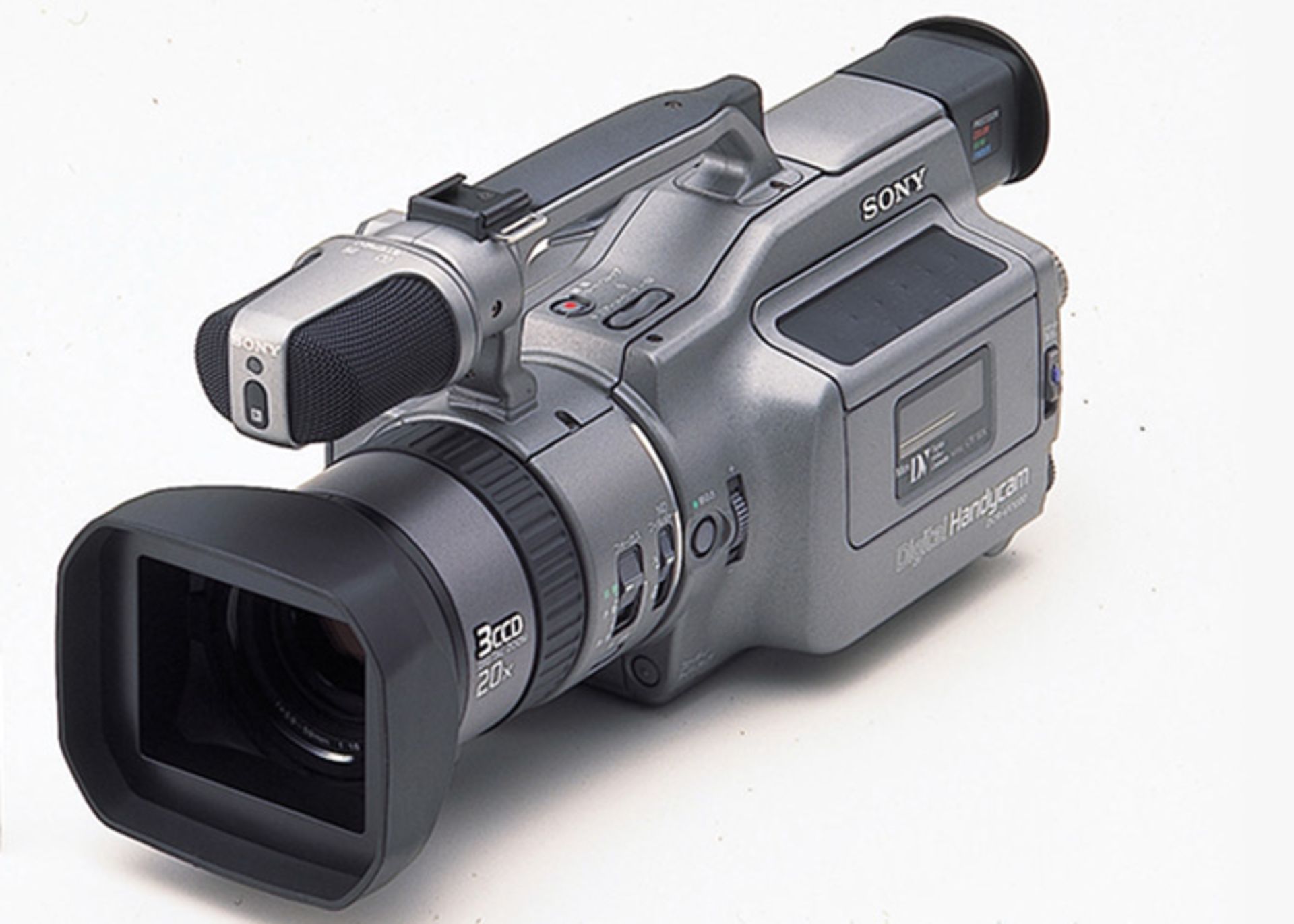
The first digital camera was launched by Sony in 1995. This device was very well built and recorded high-quality videos.
Sony Mobile
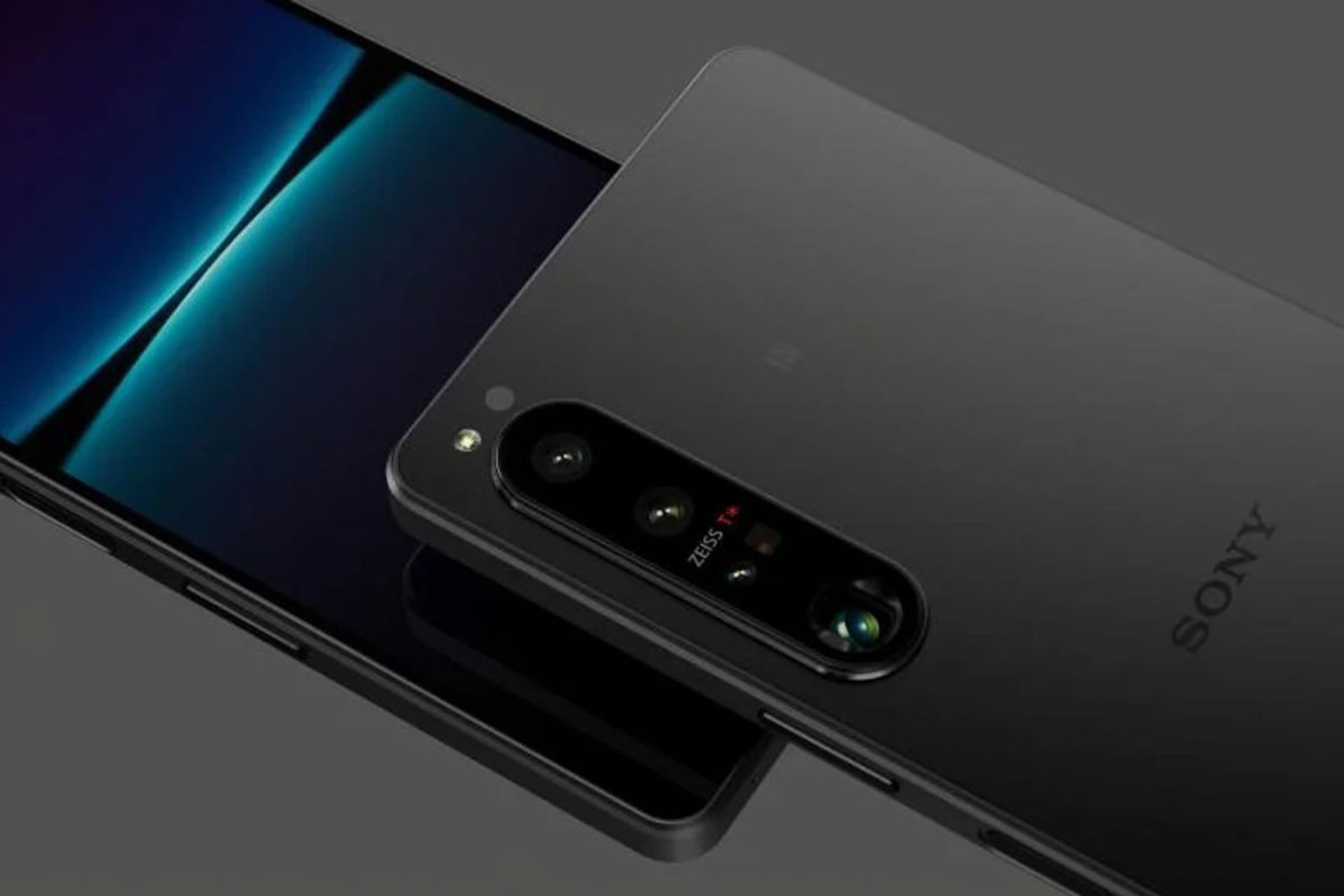
Sony Mobile Company started working in 2001 in cooperation with Ericsson. The company’s products were first marketed under the name of Sony Ericsson until Sony bought Ericsson’s shares in 2012. Since then, the phones of this company have entered the market under the name of Sony.
In 2012, Sony was able to win the title of the fourth mobile phone manufacturer. Xperia series mobile phones are the current flagships of this company. The Xperia brand doesn’t sell much at the moment, but Sony continues to produce products.
Vaio laptop
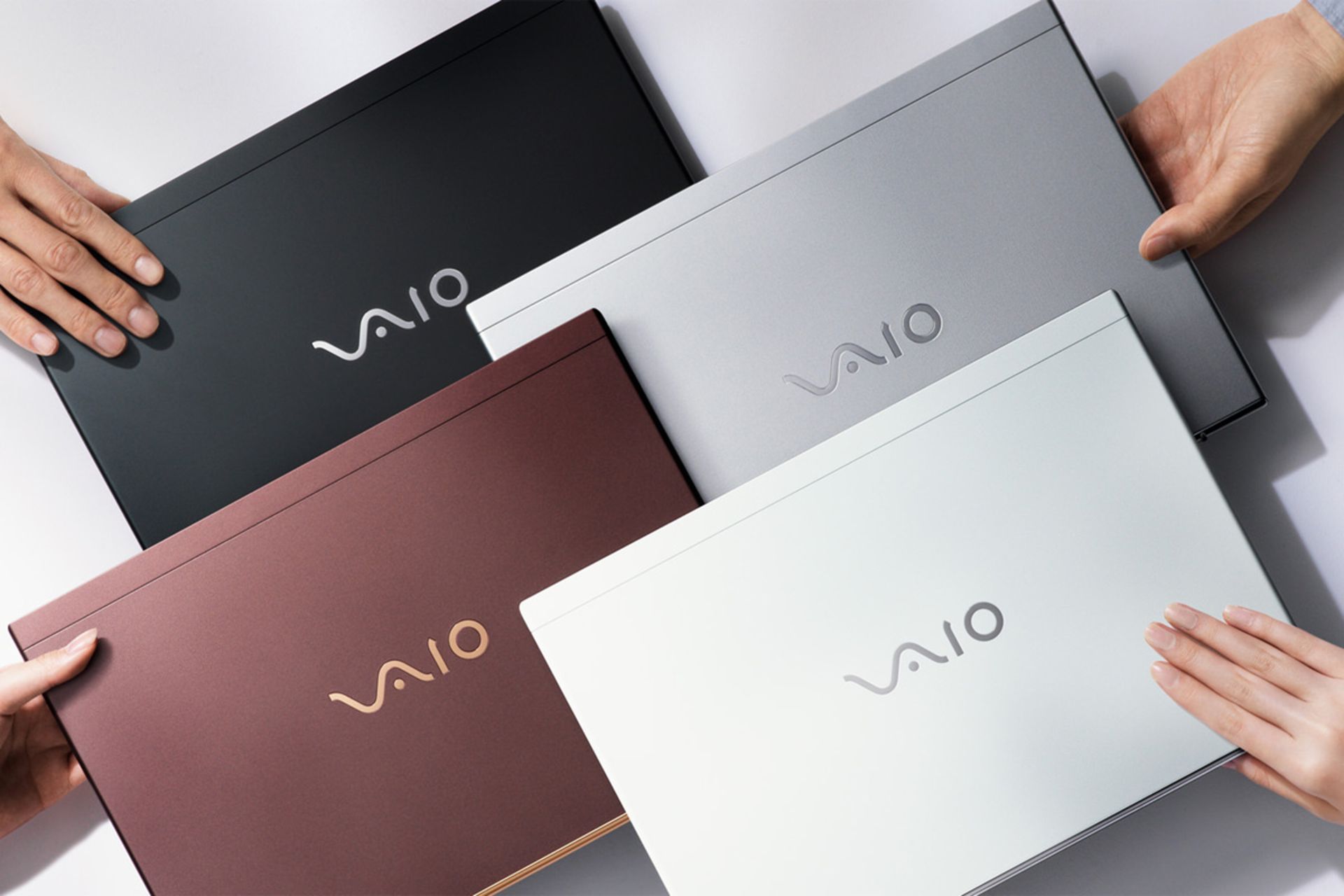
The first generation of Vaio laptops was launched in 1997. These laptops had a slim body and introduced a new concept of personal computers to the world.
Personal life of Masaru Ibuka

Masaru Ibuka was born on April 11, 1908 in Nikko, Japan. He graduated from the university in 1933 and worked in a film production company. Ibuka joined the Navy during World War II and was a member of the investigative committee; But after some time in 1945, he left the war to start his own radio repair workshop in Tokyo.
At that time, people followed the news of the world through the radio. As a result, starting a radio-related business was a good idea for a company. Ibuka and Akio founded Sony in 1946. Ibuka used transistors to make his company’s products. Therefore, Sony was introduced to the world as one of the first companies to use this technology for non-combat purposes.
Ibuka was a member of the Navy during World War II
In 1976, Ibuka was awarded an honorary doctorate from the University of Tokyo. He received two other honorary doctorate degrees in 1979 and 1994 from Tokyo and American universities.
Ibuka published a book titled “Kindergarten is Too Late” in 1971. In this book, he claimed that the most important time for human learning is from birth to three years old. As a result, he has suggested ways to teach skills to children at this time.
Ibuka was the leader of Sony until 1976 and then he retired; But even after that, he had a close relationship with company managers and guided them. He died in 1997 at the age of 89 due to heart failure.
Personal life of Akio Morita
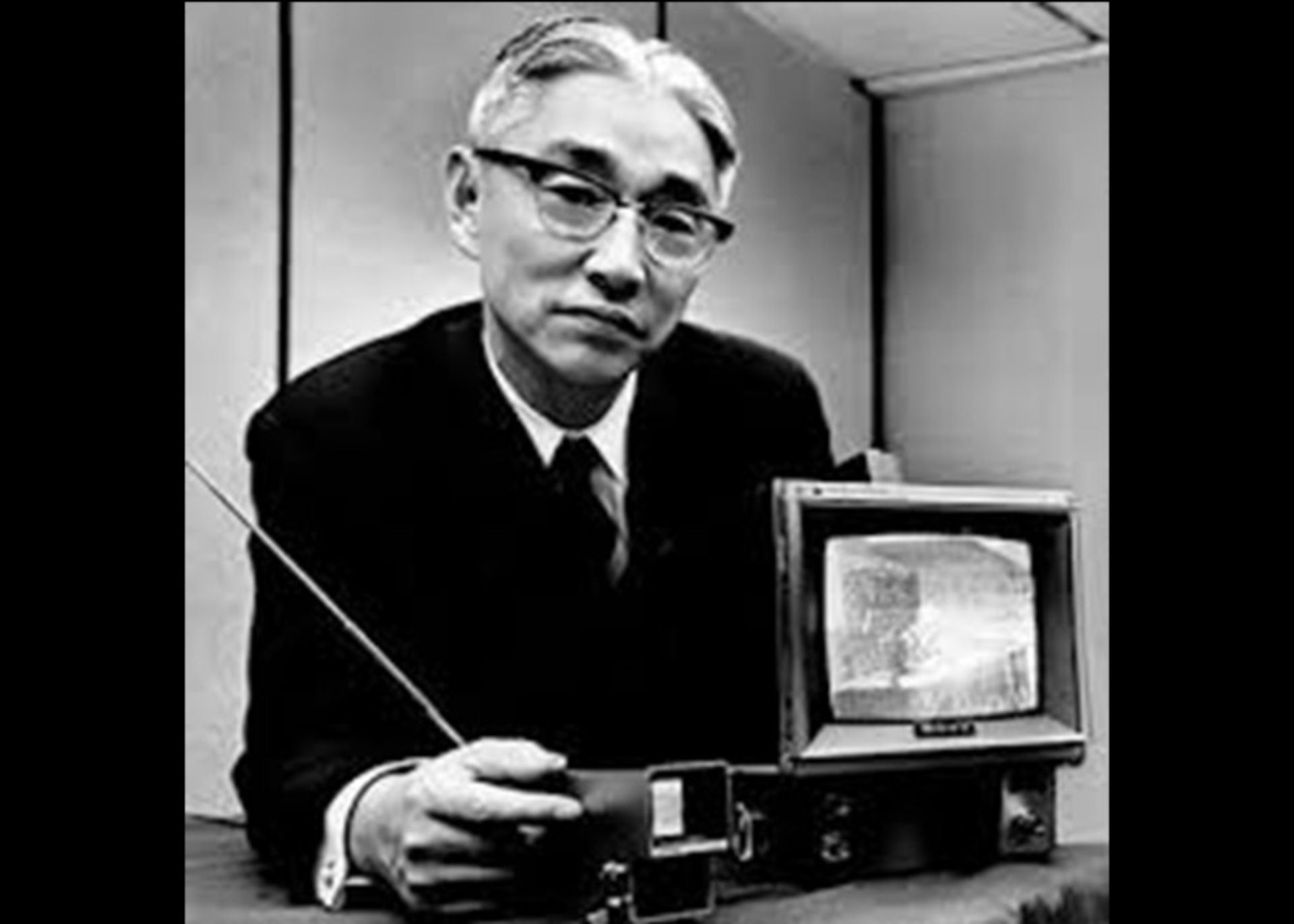
Akio Morita was born on January 26, 1921 in Japan. He was the eldest of his four siblings. As a result, his father trained him to manage the family business.
Akio was very interested in mathematics and physics and graduated from university with a degree in physics. During World War II, he became a member of the Japanese Army’s Research Committee, and while serving, met his future business partner, Masaru Ibuka.
Morita was a huge fan of all Sony products and worked hard to promote them. For example, the size of their first production radios was slightly larger than the standard shirt pocket size. Because they wanted to market their products as pocket radios, Morita made shirts for their employees with larger pockets to show customers that these radios were pocket radios.
Sony established its first branch in America in 1960. Sony was the first Japanese company to enter the US stock market. In 1994, Morita suffered a stroke while playing tennis and resigned from the chairmanship of Sony. He finally died of pneumonia in 1999 at the age of 78.
Sony failures
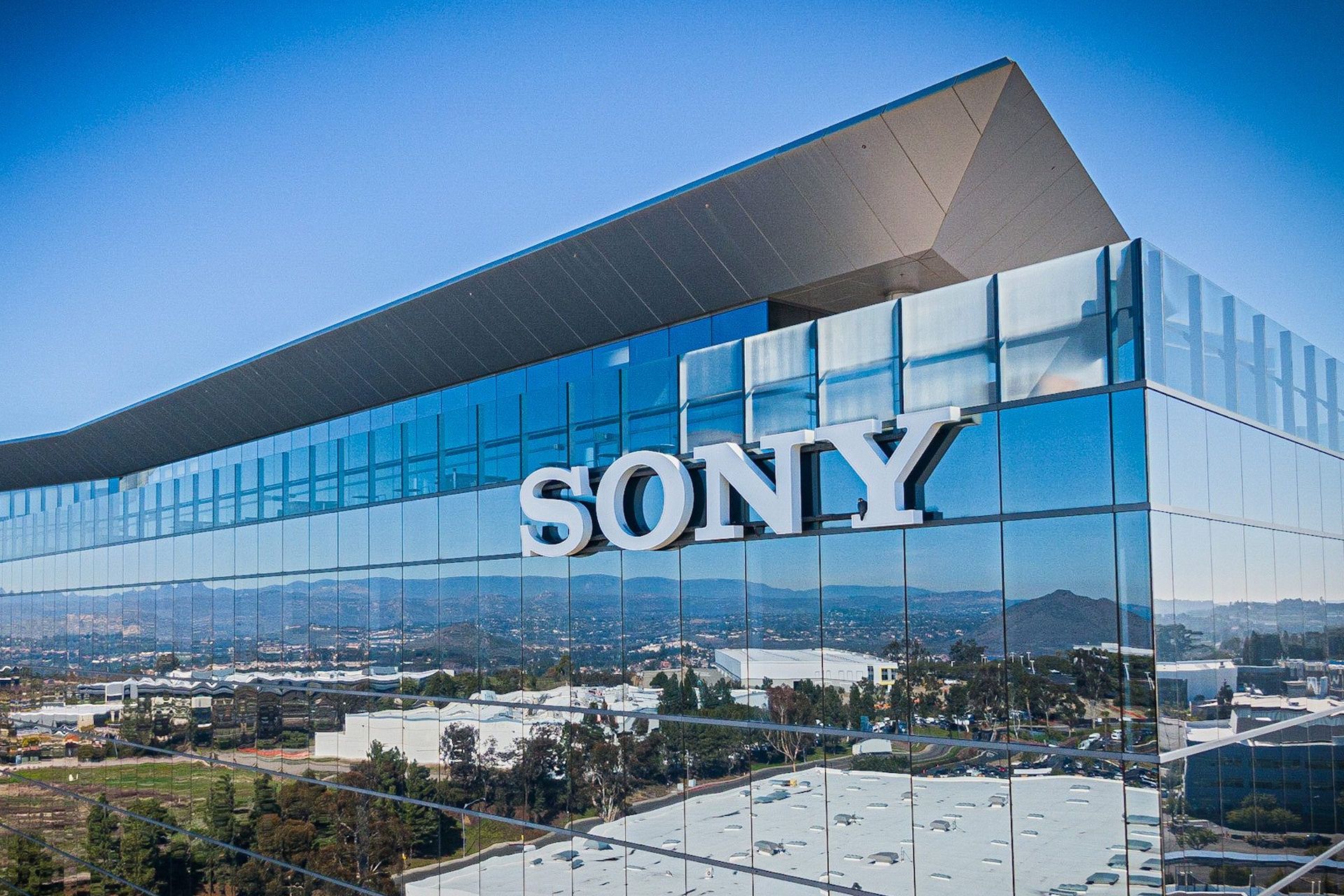
Since its establishment in 1964, Sony has produced successful and innovative products. Many of these products were entering the market for the first time, and as a result, they introduced a new concept of technology to the world; But no success story is without failures.
Sony Aibo

Sony robots were launched in 1999. These robots were in the form of cute dogs and had the power to learn. These robots could show emotions such as happiness, sadness, anger, surprise, fear and disinterest.
Sony robots were sold at a price of $2,500 and were very popular among their owners. But its high price prevented it from increasing its popularity and eventually, Sony stopped production.
Vaio music device
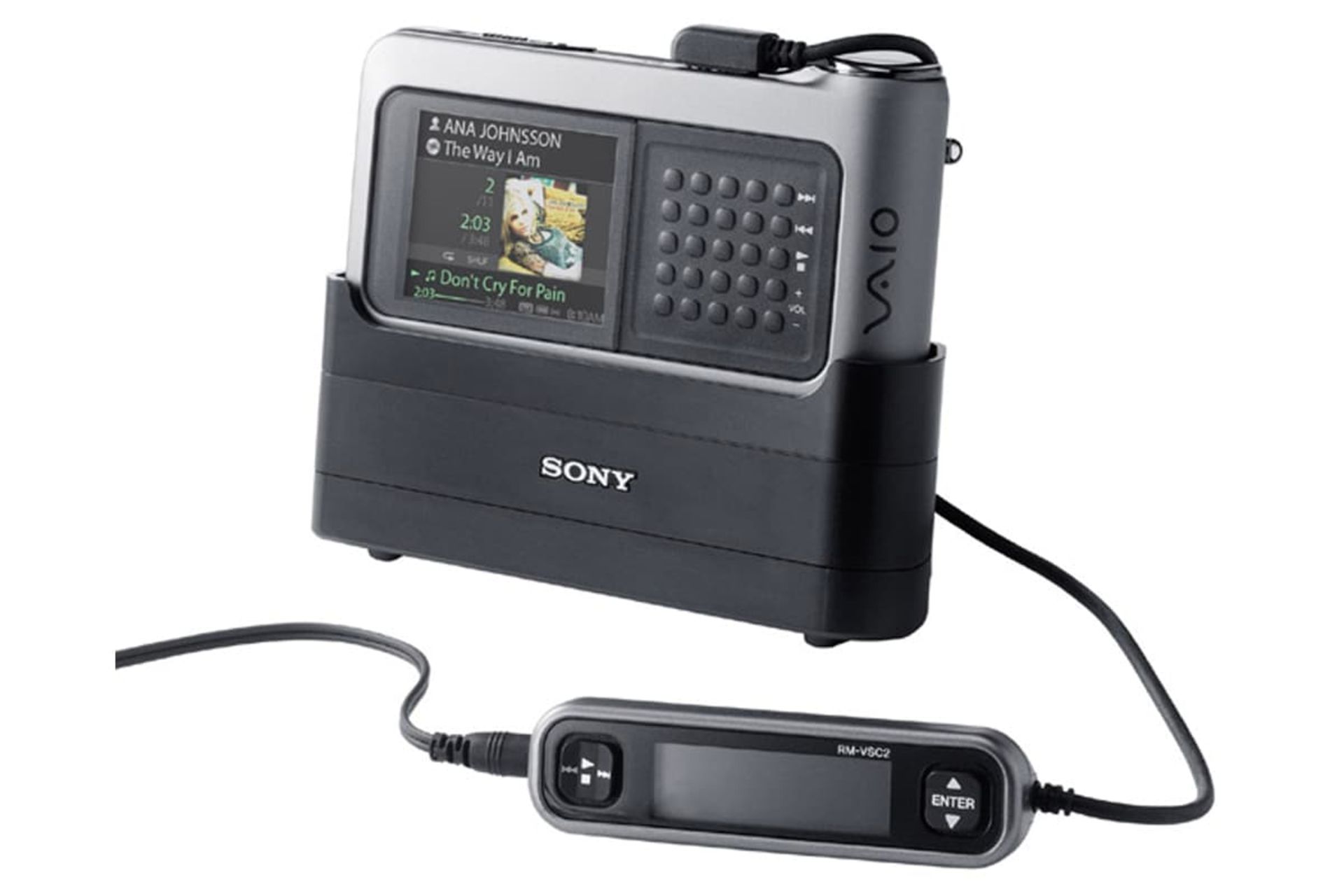
In 1979, Sony introduced a new concept of portability to the market by presenting its Walkman. The company had been Apple’s fierce competitor in digital music for two years, but its first product did not perform well.
The biggest mistake of the company was the dependence of files on the ATRACT format. Files with this format could only be used in Sony minidiscs. The ability to share files was the first word in digital music in 2000, and all files were released in MP3 format. As a result, this issue became a big challenge for Sony.
Sony e-Villa
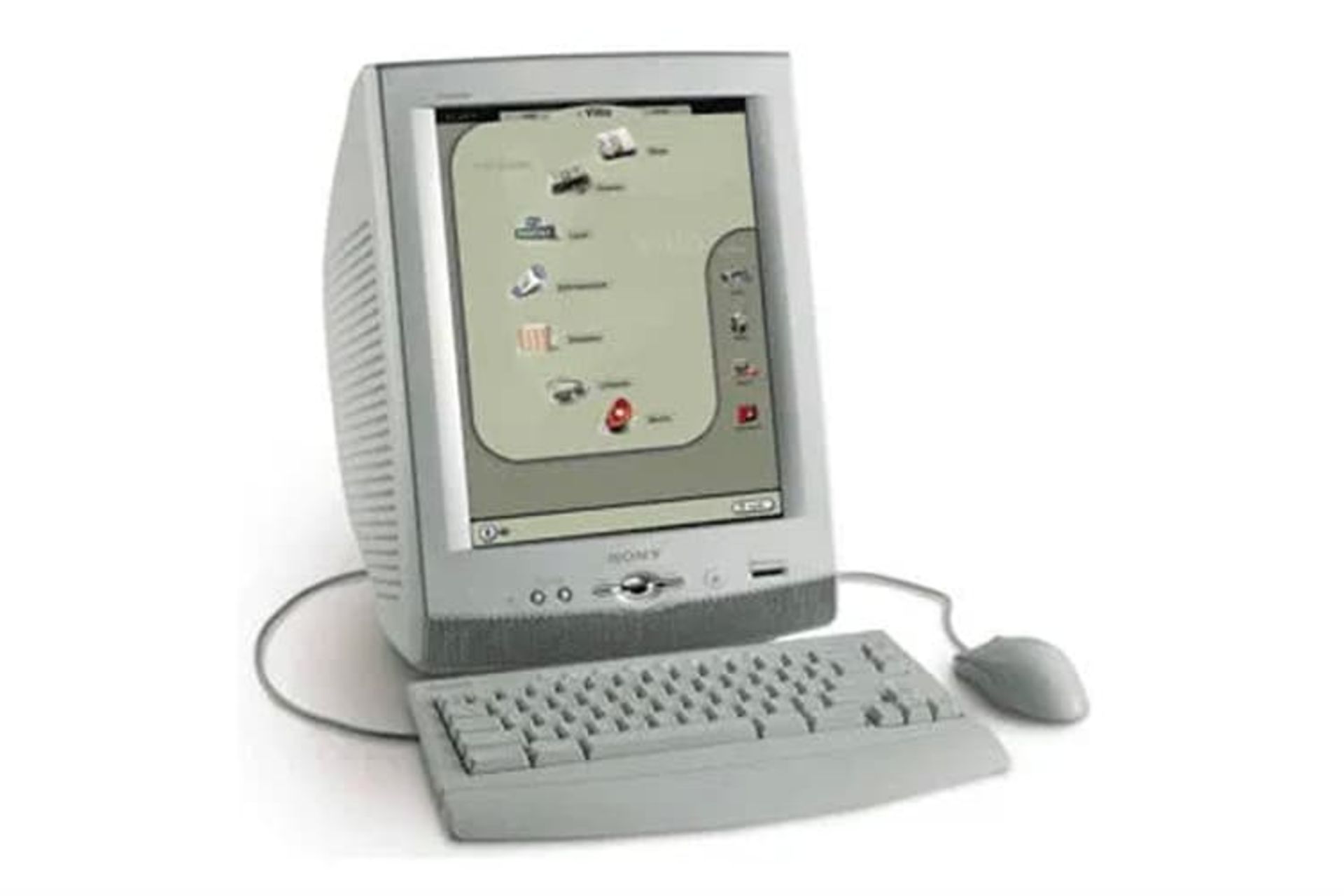
In 2001, many companies were offering Internet home appliances, including dedicated terminals for accessing the Internet and web browsers. Sony e-Villa was also a product that was launched with the same purpose.
The e-villa had a 15-inch monitor and a 56 kbps dial-up modem. e-Villa was designed to have access to email services and websites. At that time, there was a lot of competition between these devices and people preferred to use devices with Windows XP. As a result, Sony stopped the production of these products after three months.
Sony Airboard
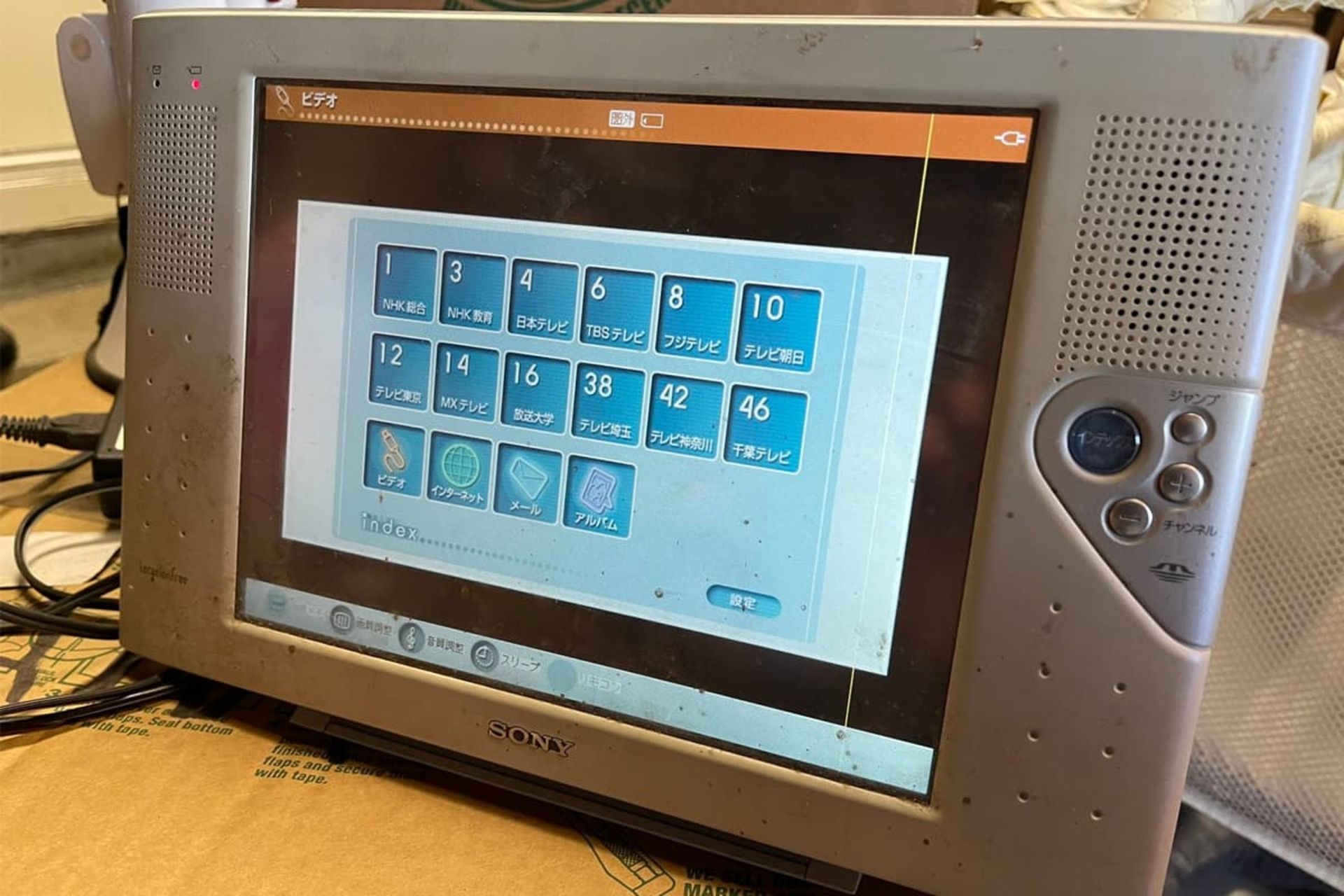
10 years before people became interested in watching videos on tablets, Sony launched a device called Airboard. The tablets of this family were 10 inches and had the possibility to connect to Wi-Fi and broadcast TV channels.
Using the picture-in-picture feature, users could search the Internet and watch TV. This device never caught on because people thought it was just a portable and expensive TV. Therefore, its production was stopped before entering the American market.
Sony PSX
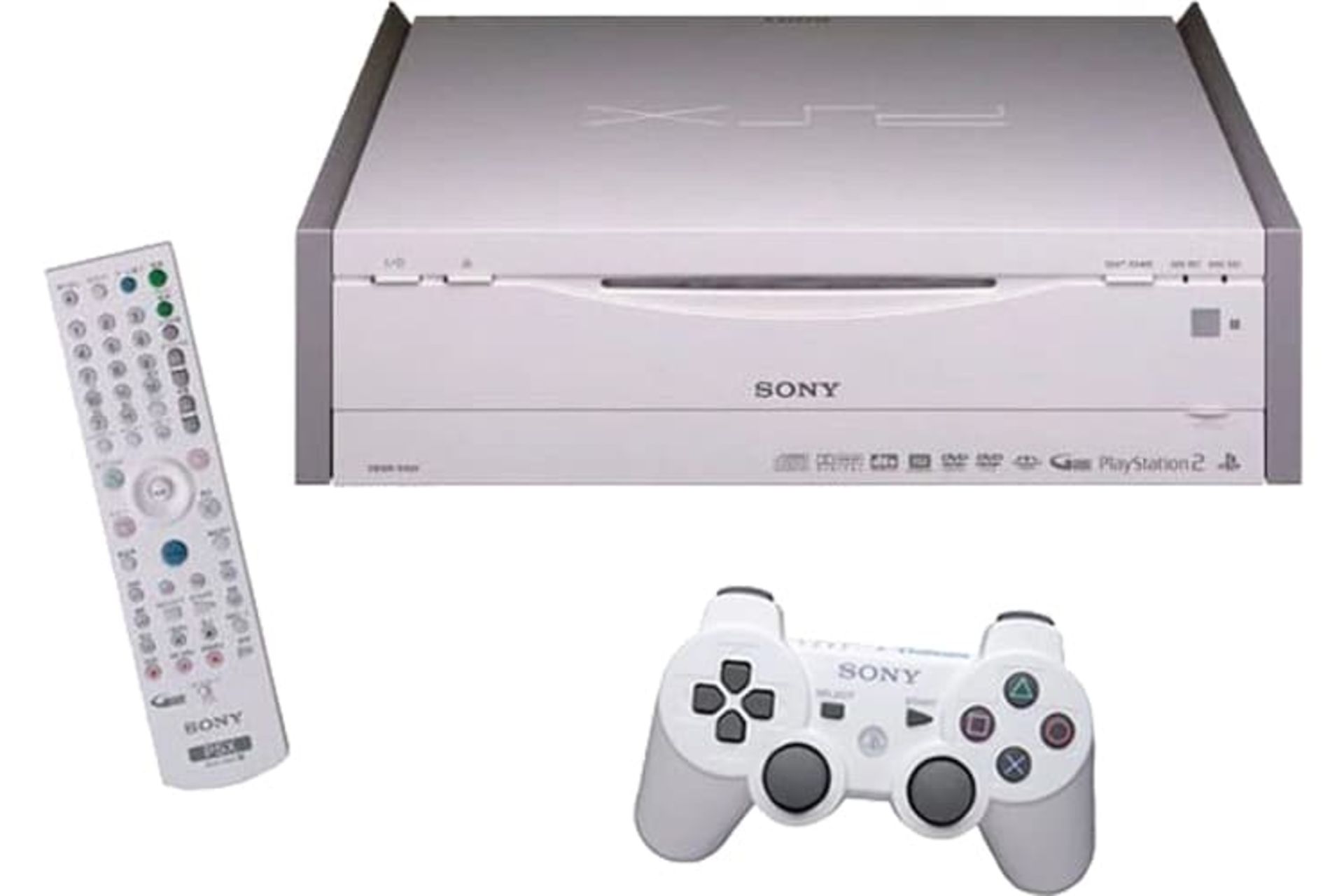
In 2003, Sony combined its two products, the PlayStation 2 and the video recorder, and marketed it as a single product. Using this product, customers could record the TV show on the storage memory or DVD at the same time as the game experience.
But the PSX, which was released only in Japan, was much larger and heavier than the PlayStation. Although this product did not have a high price, it could never attract many customers.
The current state of the Sony brand

Sony is one of the largest Japanese companies by revenue. The company reached the peak of profitability in the 1990s and 2000s due to the launch of its PlayStations, but faced financial problems in the late 2000s.
Read more: Samsung brand story; Full-view mirror of Korea’s commercial history
The global financial crisis, increased competition with PlayStation, and the earthquake in Japan in 2011 went hand in hand with Sony experiencing major failures for three years.
Due to the negative effects caused by natural disasters and exchange rates, the Times magazine called Sony a lack of flexibility and inability to measure the economy, but Sony was able to overcome all the crises in all these years by using innovation and became one of the top companies in the world. become in the television industry.
Sony’s current slogan is Be Moved, and the company aims to emotionally excite its customers with every product it offers.
Sony was able to pocket an operating profit of 1.21 trillion yen (about 8.9 billion dollars) in fiscal year 2022, which is a new record. Sony’s revenue in the final quarter of last year grew by 35 percent to about 3.06 trillion yen ($22.5 billion).


Adjective: The greatest; the best.
Pronoun: The greater part of a group, especially a group of people.
Noun: The greatest amount.
Noun: The greater part.
Noun: A record-setting amount.
How did the people of the past imagine the future?
How can you explain to people in the 1900s that a robot can sweep floors and carpets without any intervention by drawing a map of your house without sounding crazy?
To people of the last century, our technology today seems like magic; But that doesn’t mean they didn’t fantasize about what the future would be like. Many inventors and artists have depicted their own predictions of future technology. Let’s look at these paintings and then comment on their scope.
 Bird postman – 1892
Bird postman – 1892
The potential of human flight was one of the concerns of futurists. It is true that aviation has revolutionized our world, but the type of flying equipment and “flying cars” that captured the imagination a century ago will remain for the future.
One of the important innovations that the minds of the ancients often did not imagine is the Internet and modern wireless communications. In today’s world, the flying postman pictured here would probably be out of a job thanks to plain old email.
 Electric floor washer (electric scrubber) – 1899 | The vacuum cleaner was invented just two years after this image was made.
Electric floor washer (electric scrubber) – 1899 | The vacuum cleaner was invented just two years after this image was made.
The idea of a robot vacuum cleaner, now a reality in millions of homes, was apparently beyond imagination in the late 19th century.
 Machine learning-1901
Machine learning-1901
According to this prediction, teaching was supposed to become a very easy job by the year 2000. The principal simply feeds the history books into the machine, while an assistant (or perhaps a student being punished?) turns the handle and somehow wires the contents of the books to the headsets the students are wearing, and from there into their minds. sends Do you understand the necessity of the presence of the school principal in this process?
 Phone with photo – 1918
Phone with photo – 1918
The arrival of video-calling technology was predicted more than a century ago. The Electrical Experimenter magazine wrote in 1918: “Many inventors have attempted to invent a device or machine by which one person can see another while talking on the telephone.” According to the author of the magazine, such a device, which should naturally be called a “telephot”, will be invented sooner or later, because “everyone would like to have such a device.”
 Video call – 1942
Video call – 1942
Another article in the magazine Practical Electrics in 1942 predicted a similar device with moving pictures so interesting it is admirable.
 wheel of destruction
wheel of destruction
During World War I, specialized technology magazines were full of ideas that were hoped to bring an end to the long conflict. One of these inventions was the gyro-electric destroyer. “This 45-foot monster is steered by a large gyroscope wheel,” Electrical Experimenter magazine reported. “The destroyer travels at a speed of 40 to 60 miles per hour and because of its large diameter it easily rolls over trenches and other obstacles.”

The vision envisions a robot dog that readers can build for themselves; A wheeled device that operates with batteries and follows its owner’s metal cane through a magnet. It may have a cute face but don’t expect this dog to roll over, play, or react if something bad happens to you.
The idea of artificial pets doesn’t seem so strange nowadays. This is a concept that exists mostly in the field of cyberspace, exemplified by digital home assistants and artificial intelligence-based video game characters.
 Climate control – 1954
Climate control – 1954
The dramatic image above shows how future humans will be able to control the weather. This article describes an airplane that is dispatched to disperse a cloud that threatens to form a tornado. “In the age of the hydrogen bomb and supersonic flight, it’s possible that science will find ways not only to destroy tornadoes and hurricanes but also to influence weather conditions in ways that will boggle the imagination,” the magazine reports.
Read more: The future of generative artificial intelligence from its own language
 Food planning by computer – 1967
Food planning by computer – 1967
In 1967, Philco-Ford, a maker of electrical goods, produced a short film called 1999AD, showing how its future products might transform ordinary homes. The family in the film owns a space-age car, a large wall-filling television, and a large home computer that helps the family (specifically the mother) plan their meals. In the film, we see the father of the family using the computer to check the invoice for the clothes he bought online.


Do animals have an understanding of the concept of death?


What is Kali Linux? Everything you need to know about this popular but mysterious distribution


Sony Brand Story; From the production of rice cookers to becoming one of the most famous companies in the world


How did the people of the past imagine the future?


Mammoth and dodo return to nature


Canopus; What do we know about the second brightest star in the sky?


How to use iMessage on Android?


Can humans endure the psychological torment of living on Mars?


Xiaomi Glorimi M2 Max watch review; Alternative economic option for iPhone owners


Artificial intelligence problems; Frauds based on artificial intelligence and methods to deal with them
Popular
-



 Technology1 year ago
Technology1 year agoWho has checked our Whatsapp profile viewed my Whatsapp August 2023
-



 Technology1 year ago
Technology1 year agoSecond WhatsApp , how to install and download dual WhatsApp August 2023
-



 Technology1 year ago
Technology1 year agoHow to use ChatGPT on Android and iOS
-



 AI2 years ago
AI2 years agoUber replaces human drivers with robots
-



 Technology1 year ago
Technology1 year agoThe best Android tablets 2023, buying guide
-



 Technology1 year ago
Technology1 year agoThe best photography cameras 2023, buying guide and price
-



 Humans2 years ago
Humans2 years agoCell Rover analyzes the inside of cells without destroying them
-



 Technology1 year ago
Technology1 year agoHow to prevent automatic download of applications on Samsung phones


